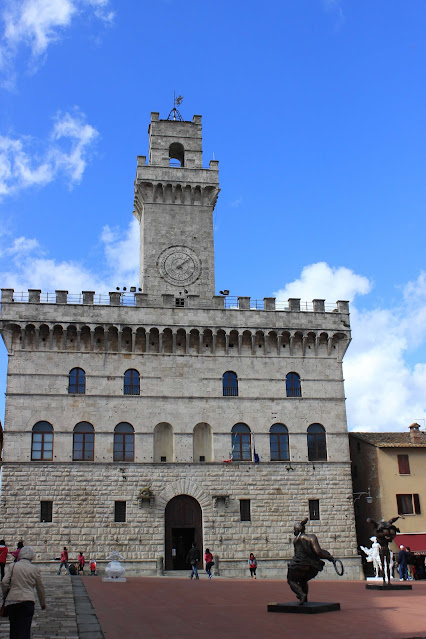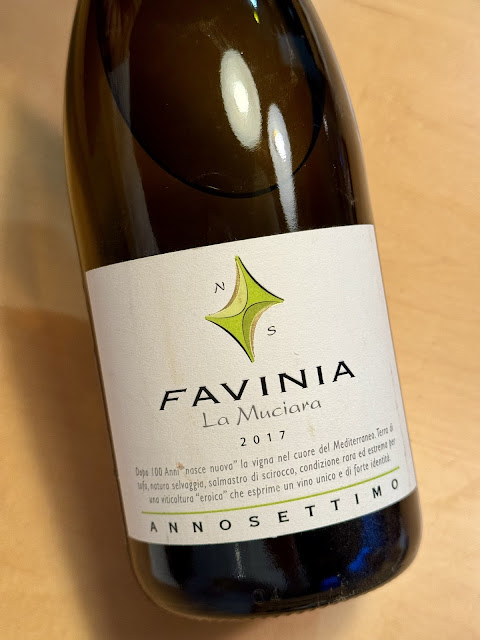As with many, Tuscany was my first love in discovering Italy. It’s where I first lived outside the United States and fell in love with the city of Florence. Chianti were really the first wines that I gravitated to once I returned to the states since no matter where you go you can easily access them and reminded me of my life in Tuscany. To this day Sangiovese is still one of my favorite Italian grapes, if not my most favorite. Sangiovese is Italy’s most planted red grape and can be found through a multitude of regions all showcasing this grape through their own expression. This week I feature one of the areas of Tuscany most known for producing Sangiovese in its finest expression, Montepulciano and Vino Nobile di Montepulciano from the Contucci winery.
About Montepulciano and Vino Nobile di Montepulciano
If you’ve traveled throughout Tuscany’s wine region you may have stumbled across the town of Montepulciano. Located between the Val d’Orcia and the Val di Chiana, Montepulciano sits in the southeastern part of Tuscany just east of the town of Montalcino, Italy’s other finest expression of Sangiovese in Brunello di Montalcino. It’s another classic Tuscan hilltop village, but bring your comfortable walking shoes as you stroll uphill to the top at Piazza Grande. Thankfully there are plenty of great shops, restaurants and places to stop and visit during your journey to the stop that provides stunning views over the land.
Montepulciano was upgraded to the DOCG designation in 1980 and was the first in Italian wine to receive it preceeding Brunello, Barolo and Barbaresco. The vineyards of this area sit at 800 feet up to almost 2,000 feet above sea level. The wines from this area are produced with at least 70% Prugnolo Gentile, a clone of Sangiovese. Up to 30% of other permitted Tuscan varieties are allotted even up to 5% of white grapes, although not commonly used. Most producers will blend Canaiolo and/or Mammolo with the Prugnolo Gentile, but many producers are also producing Vino Nobile from 100% Prugnolo Gentile. Vino Nobile requires a minimum of 2 years of aging with 1 year in wood and the riserva wines require at least 3 years of aging with 6 months in the bottle.
The Contucci winery
I stumbled upon this winery on my visit to Montepulciano some years back and have been sitting on this wine since I brought it back. Not knowing much about the Contucci winery at the time it was hard not to want to stop in as they are located in the historical center of Montepulciano right near Piazza Grande that you can’t miss as you stroll through this village.
The winery has a rich history with over 40 generations of winemaking since 1008. Imagine, 40 generations! Per their site they are one of the “founding fathers” of Vino Nobile di Montepulciano and I can imagine with their history the family has probably seen it all with the transformations that have taken place throughout the years.
The Contucci winery and palace in which they occupy in the center of town is from the 16th century architected by Antonio di San Gallo with frescoes by Andrea Pozzo. The palace was once occupied by Pope Giulio III and Ferdinando I, the Grand Duke of Tuscany. The Contucci family has occupied the state since 1646.
When you enter, although its been years since my visit, you are able to taste the wines produced by the Contucci family and also have the opportunity to wander through the cellars underground that were built into the rock and contain the original old walls of the town.
The Contucci family follows traditional techniques along with manually harvesting their grapes and bringing them into the winery/palace in town for vinification where the wines are also aged. Their oldest bottle of Vino Nobile di Montepulciano dates to 1887.
Today the winery produces over 100,000 bottles annually and of their 420 acres of land about 50 acres are dedicated to vineyards with the grapes of Vino Nobile di Montepulciano occupying about 37 of those acres.
The Wine
I finally opened my bottle of 2008 Contucci "Mulinvecchio" Vino Nobile di Montepulciano DOCG that I brought back when I visited the Contucci winery years ago. I tasted this wine during the Christmas holiday and delayed posting this last week as I've been trying to track down my notes, but unfortunately cannot locate them. When I stumble upon them I'll update this post hopefully. I don't have the particular blend used in this vintage, but the Mulinvecchio wines from Contucci are only produced in the best vintages. It's a single vineyard Vino Nobile from their 25+ year old vines. Contucci has had a strong impact on the history behind Vino Nobile di Montepulciano and in tasting these wines one can get a sense of the land and where these wines originated from.
As rich as its history is I believe Vino Nobile di Montepulciano is still crafting its identity amongst some of the producers. There can be widely different styles due to the usage of a variety of grapes allowed, the type of oak used and the sand and clay soils where the vineyards are planted depending on the location of the estate. I personally can appreciate the wineries that are working in producing Vino Nobile made from 100% Prugnolo Gentile or even with some of the additional grapes included such as Canaiolo, Colorino or Mammolo. I think this best expresses the identity of the land with less intervention, influences from new oak or international varieties added.
Although Vino Nobile is reasonably priced you can also buy Rosso di Montepulciano, which will give you some of the same characteristics of Vino Nobile, but the best grapes of course are reserved for the noble Vino Nobile.
Vino Nobile di Montepulciano has a new Pieve designation that will be releasing their first wines to the market this year that I have yet to try so make sure to seek those out as well. You can read more about it in my article below tasting with Antonio Galloni.
You can find some of my other prior articles on Vino Nobile di Montepulciano:
- Antonio Galloni leads a Tasting of Vino Nobile di Montepulciano
- Vino Travels celebrates 9 years with Vino Nobile di Montepulciano
- What’s the Difference: Montepulciano d’Abruzzo and Montepulciano of Tuscany
- Wine Dinner with Vino Nobile di Montepulciano
- Antico Colle Rosso and Vino Nobile di Montepulciano
- Rosso di Montepulciano and Vino Nobile di Montepulciano with Dei Winery





